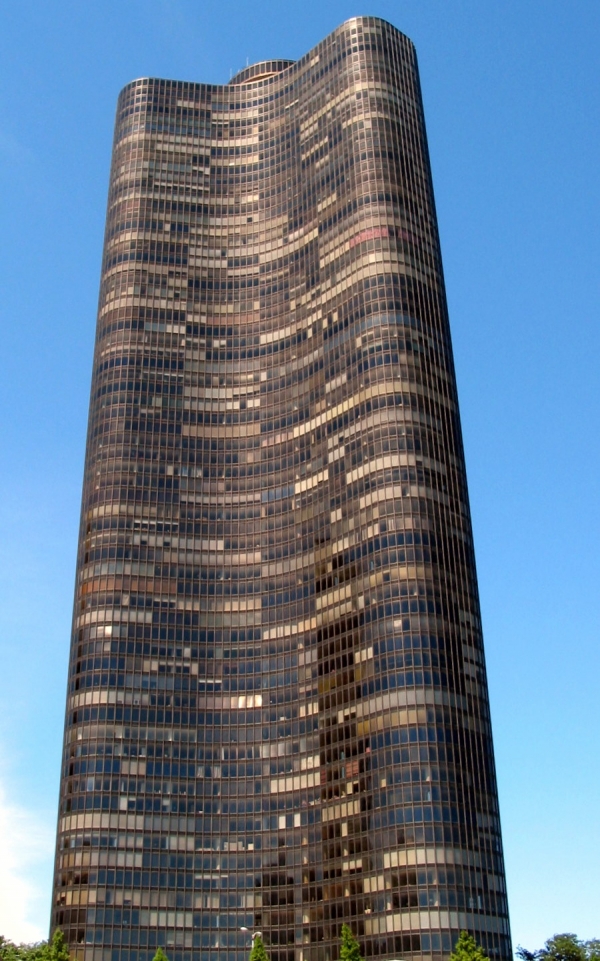CSI Project Solutions: Noise Control and Sound Transmission
Noise control concerns influence the construction of a hotel – learn how to handle sound transmission on a challenging job site.

I was recently asked to consult with an owner on issues of noise and sound transmission during the construction of a hotel. The area his property is located in caters to the entertainment industry, with an amusement park close by feeding and supporting the local community. Additionally, the property is bordered by a railroad track on one side and an expressway exit on the other. However, because a hotel is a building primarily designed for people to sleep, quiet is a priority.
Orientation on the Site
To be convenient to most travelers, hotels are often located near or just off a major freeway or throughfare. Even more often, hotels are located near a mall and at least one restaurant, and restaurants’ hours of operation often extend long past most travelers’ quiet time. Business travelers in particular often cherish quiet time and expect to enjoy it after 8:30 or 9. Freeway traffic can increase after this time, because most truck freight moves at night while the daily commuters are at home.
The layout of the property in question, the size and design of the hotel, and future construction needs dictated that the building would sit parallel to the freeway exit and the railroad tracks. However, the most practical way to decrease the sound hitting the building would to be to orient the building perpendicular to these areas. The ends of a hotel are mostly solid walls, and these would be the most resistant to sound penetration in each room. A parallel orientation to the sources of the noise would position the most vulnerable parts of the building to get the most noise.
Sound Transmission Class (STC) of Walls vs Windows
Most basic construction models will contain the following: 5/8” thick drywall, wood or steel studs filled with insulation, an exterior sheathing of either drywall or plywood, and then either expanded/extruded polystyrene and stucco or a building wrap with a brick exterior. In either case the Sound Transmission Class (STC) rating will rise to a 45 or above – meeting or exceeding International Building Code (IBC). The exterior wall assemblies required by most franchise construction projects provide STC ratings at or above IBC minimums.
While many owners would like to offer more (and some do), many forget that, in addition to the structural wall assembly, openings and penetrations such as windows need to be addressed.
This particular owner didn’t quite understand the process of sound transmission. He continued to talk about beefing up this outside wall area in an attempt to make the building quieter, hoping to add another layer of drywall on the inside of the space, increase stud spacing, etc. The appropriate analogy came when I asked him to imagine how effective any wall would be if you cut holes in it, which is exactly what you are doing when you install windows. The typical commercial window ranges from a rating of 25 STC to 35 STC, while the rating of the structural wall assembly described above hovers around the 45 STC mark. The window is the weak link in the assembly from a sound transmission perspective, so we made the recommendation of focusing available funds on raising the STC of the windows, with a secondary focus on additional wall protection.
Sound Masking
One additional tool in our sound assembly protection kit is often sitting just below the hotel window. It’s the other hole we cut in the outside wall – the one for the heating and cooling unit. Climate control in 70 different small spaces with 70 different clients mandates the installation of individual units to satisfy each guest. While this is a significant cost for the owner, it also provides sound masking, which is basically the technique of using one type of sound to deflect or distract from another. In Industry terminology, sound masking is the use of a low-level, broadband sound to cover up background noise. While the term “sound masking” originated from the need to provide privacy in open office workstations in the ‘70s, the hotel industry has been using this basic practice for far longer. The constant sound of the fan motor in the room’s heating and cooling unit helps to drown out the intermittent noise of passing trucks, other guests, etc., and provides a background of sound more acceptable to the human ear.
Tips: Minimizing Sound Transmission and Sound Masking
The issue of minimizing outside noise can be addressed by properly orienting a building on site. Hotels should be sited perpendicular to sources of noise when possible.
The exterior wall assemblies required in typical franchise construction projects provide STC ratings at or above International Building Code (IBC) minimums.
To increase sound protection from the outside in, address the weakest link – penetrations and openings like windows.
Acoustically speaking, heating/cooling units are our friends. They provide sound masking, which uses white noise to reduce our awareness of other, less pleasing sounds.
In my next article we will move inside the building to explore interior sound issues and learn how they can be addressed.

Thad Goodman
Thad Goodman currently covers the Great Lakes and Midwest for the National Gypsum Company as a CONSTRUCTION DESIGN MANAGER. His position calls on the Architectural Community educating on Gypsum Assemblies, Product uses. He authored this article while working in the panels division of Serious Energy, manufacturer of the acoustical drywall panel QuietRock. He has professional experience as a drywall installer and finisher; has managed a joint compound manufacturing plant for Magnum in Tampa, FL; and has worked for Georgia-Pacific Gypsum in field sales and as a district manager and an architectural consultant. He is an active member of the Construction Specifications Institute (CSI), currently the Institute Director of the Great Lakes Region President.
Website: www.nationalgypsum.comLatest from Thad Goodman
- CSI Project Solutions: Drywall Delivery vs Transporting It Yourself
- CSI Project Solutions: Sound Control Options in a Warehouse
- CSI Project Solutions: Controlling the Noise Between Adjoining Hotel Rooms
- CSI Project Solutions: Gypsum on the Job? Think Permanent Heat
- CSI Project Solutions: Hotel Corridor Sound Control


